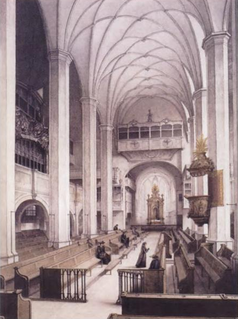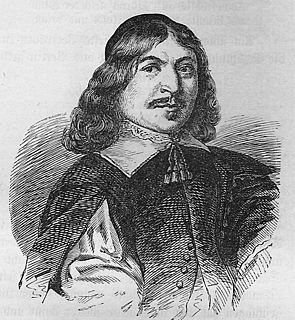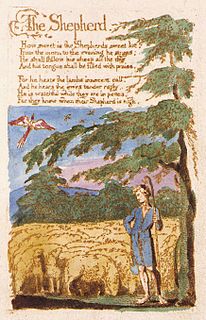
Liebster Gott, wenn werd ich sterben?, BWV 8, is a church cantata by Johann Sebastian Bach. He composed the chorale cantata in Leipzig for the 16th Sunday after Trinity and first performed it on 24 September 1724. It is based on the hymn by Caspar Neumann.

In 1724 Johann Sebastian Bach composed the church cantata Meine Seel erhebt den Herren, BWV 10, as part of his second cantata cycle. Taken from Martin Luther's German translation of the Magnificat canticle, the title translates as "My soul magnifies the Lord". Also known as Bach's German Magnificat, the work follows his chorale cantata format.

The Christmas Oratorio, BWV 248, is an oratorio by Johann Sebastian Bach intended for performance in church during the Christmas season. It was written for the Christmas season of 1734 and incorporates music from earlier compositions, including three secular cantatas written during 1733 and 1734 and a now lost church cantata, BWV 248a. The date is confirmed in Bach's autograph manuscript. The next performance was not until 17 December 1857 by the Sing-Akademie zu Berlin under Eduard Grell. The Christmas Oratorio is a particularly sophisticated example of parody music. The author of the text is unknown, although a likely collaborator was Christian Friedrich Henrici (Picander).

Jesu, der du meine Seele, BWV 78 is a church cantata of Johann Sebastian Bach. He composed the chorale cantata in Leipzig for the 14th Sunday after Trinity and first performed it on 10 September 1724. It is based on the hymn by Johann Rist.
Der Friede sei mit dir, BWV 158, is the shortest of the cantatas by Johann Sebastian Bach and features a bass soloist. It survives as a cantata for the third day of Easter but might be a fragment of a work originally written for Purification. Given this background, and the fact that it was copied by Christian Friedrich Penzel, one of Bach's last students, there is a confusing variety of proposed composition dates. It may date back to Bach's Weimar period, although a date as late as 1735 has been suggested.

Johann Sebastian Bach composed the church cantata Es ist nichts Gesundes an meinem Leibe, BWV 25 in Leipzig for the 14th Sunday after Trinity and first performed it on 29 August 1723.

Gott, wie dein Name, so ist auch dein Ruhm, BWV 171, is a church cantata by Johann Sebastian Bach. He composed it in Leipzig for New Year's Day and probably first performed it on 1 January 1729.

Johann Sebastian Bach composed the church cantata Du sollt Gott, deinen Herren, lieben, BWV 77 in Leipzig for the thirteenth Sunday after Trinity and first performed it on 22 August 1723.

Johann Sebastian Bach composed the church cantata Wer nur den lieben Gott läßt walten, BWV 93 in Leipzig for the fifth Sunday after Trinity and first performed it on 9 July 1724. He based the chorale cantata on the hymn of the same title by Georg Neumark (1657). It is part of his chorale cantata cycle.

Johann Sebastian Bach composed the church cantata Bringet dem Herrn Ehre seines Namens, BWV 148, probably in 1723 in Leipzig for the 17th Sunday after Trinity.

Johann Sebastian Bach composed the church cantata Ich elender Mensch, wer wird mich erlösen, BWV 48, in Leipzig for the 19th Sunday after Trinity and first performed it on 3 October 1723.

Sehet, wir gehn hinauf gen Jerusalem, BWV 159, is a church cantata by Johann Sebastian Bach. He composed it in Leipzig for the Sunday Estomihi, the last Sunday before Lent, and probably first performed it on 27 February 1729.

Johann Sebastian Bach composed the church cantata Ach Herr, mich armen Sünder, BWV 135 in Leipzig for the third Sunday after Trinity and first performed it on 25 June 1724. It is the fourth chorale cantata from his second annual cycle, and is based on the hymn by Cyriakus Schneegass.

Was mein Gott will, das g'scheh allzeit, BWV 111, is a cantata by Johann Sebastian Bach for use in a Lutheran service. He composed the chorale cantata in Leipzig in 1725 for the third Sunday after Epiphany and first performed it on 21 January 1725, as part of his chorale cantata cycle. It is based on the hymn by Albert, Duke of Prussia, published in 1554, on the topic of the Christian's acceptance of God's will.

Herr Jesu Christ, wahr' Mensch und Gott, BWV 127, is a cantata by Johann Sebastian Bach for use in a Lutheran service. He composed the chorale cantata in 1725 in Leipzig for the Sunday Estomihi, the Sunday before Lent. It is based on Paul Eber's 1582 hymn in eight stanzas "Herr Jesu Christ, wahr Mensch und Gott". Bach first performed it on 11 February 1725.

Johann Sebastian Bach composed the church cantata Ach, lieben Christen, seid getrost, BWV 114, in Leipzig for the 17th Sunday after Trinity and first performed it on 1 October 1724.
"Herzlich lieb hab ich dich, o Herr" is a Lutheran hymn in German by the Protestant theologian and reformer Martin Schalling, written in Amberg in 1569 and first printed in 1571. It is sung to an anonymous melody, which appeared in a tablature book for organ in 1577. The hymn is often used for funerals, especially the third and last stanza, "Ach Herr, laß dein lieb Engelein". It appears in the current German Protestant hymnal Evangelisches Gesangbuch (EG).

Jessie Bayes was a British Arts & Crafts artist who specialized in miniature paintings, illuminated manuscripts, stained glass, iconography and more.















